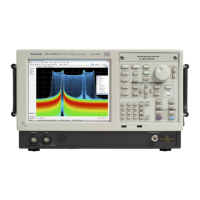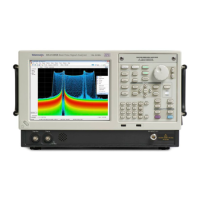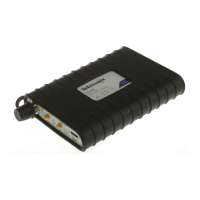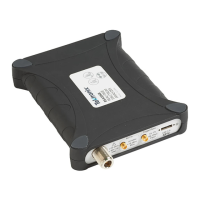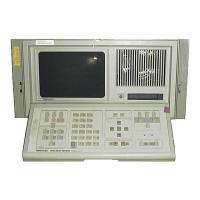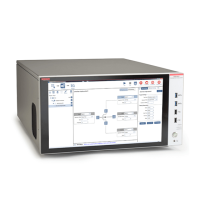Performance Verification
7. Select the Peak
key on the Markers control bar to set the Reference Marker
(MR) to the carrier peak.
8
.
R
ecord the Power Meter reading and the RSA5100B marker reading in the
following table.
9. Set both the RF generator output frequency and the RSA5100B Center
Frequency to the next frequency in the table.
10. Select the Peak key on the Markers control bar to set the Reference Marker
(MR) to the carrier peak.
11. Calculate the ΔPower Meter number: subtract the Power Meter reading at
100 MHz from the Power Meter reading at this frequency.
12. Calculate the ΔRTSA number: subtract the RTSA reading at 100 MHz from
the RTSA reading at this frequency.
13. Calculate the RF Flatness Error:
RF Flatness Error = ΔRTSA at this freq - ΔPower Meter at this freq + delta
30 dB attenuator at this frequency
Readings are in dBm and error is in dB.
14. Repeat steps 9 through 13 for each of the center frequencies shown in the
following table.
Table 74: RF flatness (Option 50/51 Preamp ON)
Attenuator = 10 dB
Frequency
Power meter
reading
∆ Power
meter (vs.
100 MHz)
RTSA reading
(vs. 100 MHz)
30 dB
attenuator
∆30 dB
attenuator
RF flatness
error
1
100 MHz 0 0 0
10 MHz
20 MHz
30 MHz
40 MHz
50 MHz
60 MHz
70 MHz
80 MHz
90 MHz
200 MHz
300 MHz
400 MHz
500 MHz
600 MHz
RSA5100B Series Technical Reference 99

